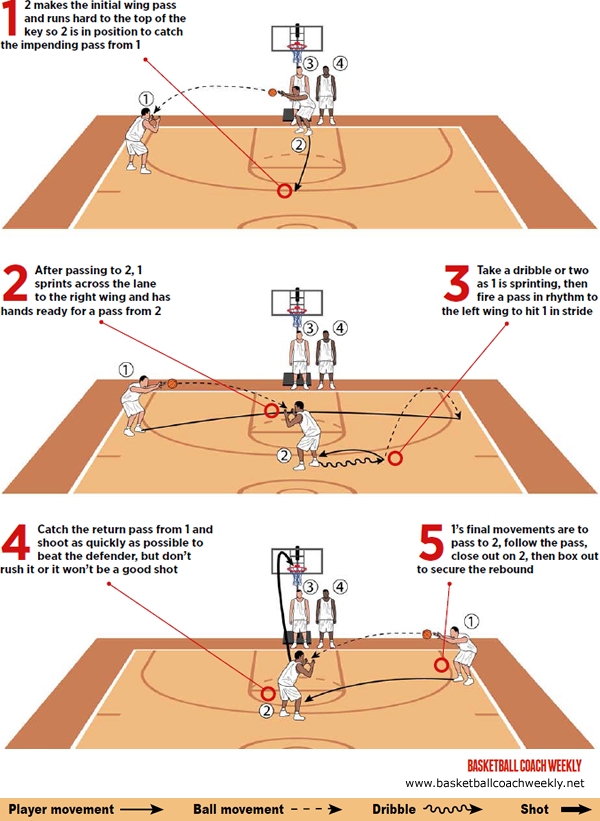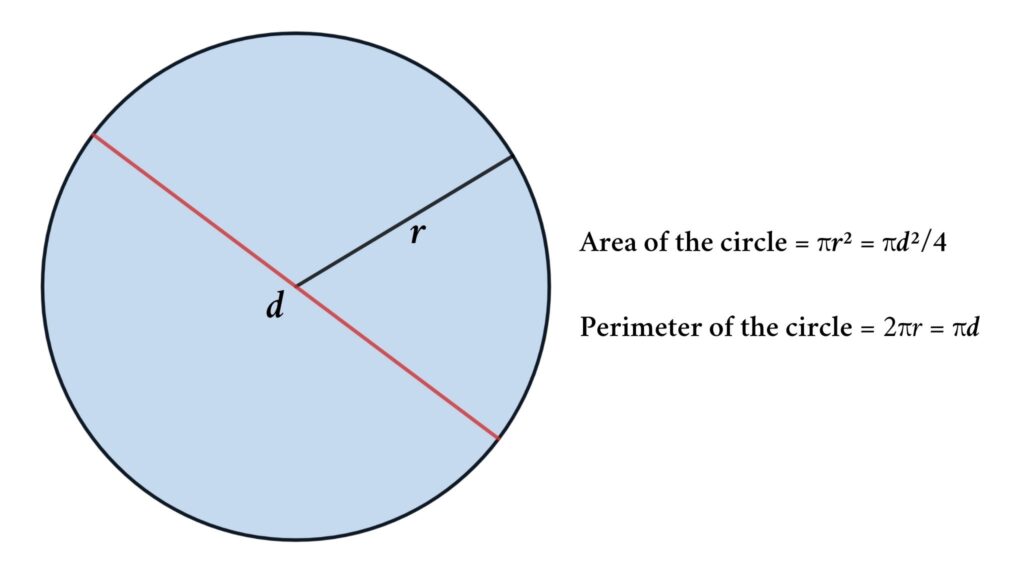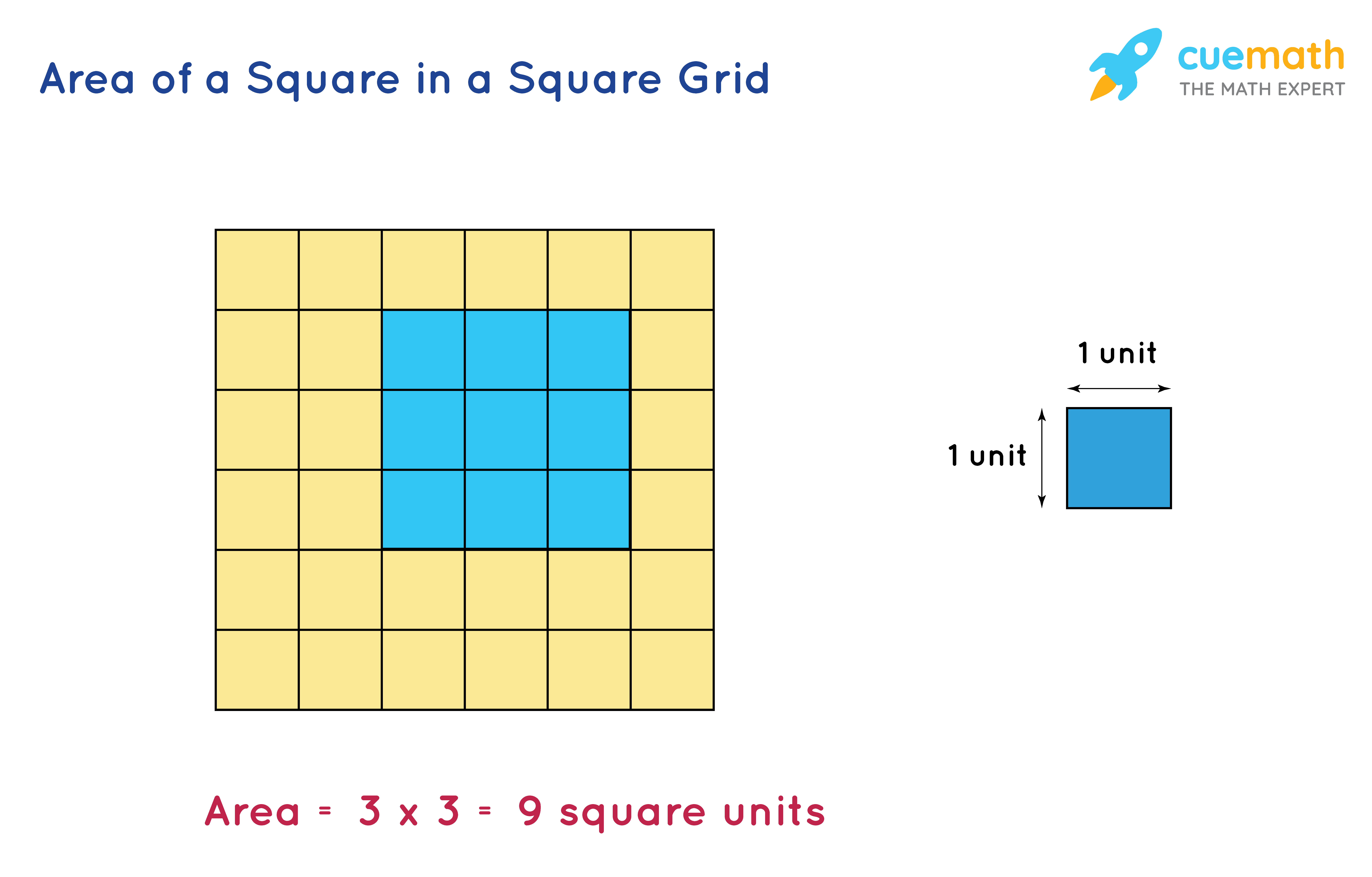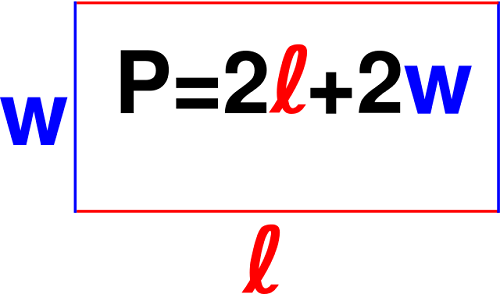Topic perimeter geometry definition: Explore the fundamental concept of perimeter in geometry with our comprehensive guide. Learn the definition, formulas, and applications of perimeter, essential for mastering geometric principles. Whether you're a student or enthusiast, this article provides clear insights to deepen your understanding of perimeter in geometric contexts.
Table of Content
Perimeter in Geometry
The perimeter of a shape is the total length of its boundary. It is calculated by adding the lengths of all the sides or edges of the shape. The perimeter is measured in linear units such as centimeters, meters, inches, or feet.
Perimeter Formulas for Common Shapes
| Shape | Formula |
|---|---|
| Square | Perimeter = 4 × side length |
| Rectangle | Perimeter = 2 × (length + width) |
| Triangle | Perimeter = side1 + side2 + side3 |
| Circle (Circumference) | Perimeter = 2π × radius |
Examples
- Square: A square with a side length of 5 cm has a perimeter of 4 × 5 = 20 cm.
- Rectangle: A rectangle with a length of 7 units and a width of 4 units has a perimeter of 2 × (7 + 4) = 22 units.
- Triangle: An equilateral triangle with each side measuring 7 cm has a perimeter of 3 × 7 = 21 cm.
- Circle: A circle with a radius of 7 feet has a perimeter (circumference) of 2 × π × 7 = 44 feet.
Finding the Perimeter
To find the perimeter of regular polygons, multiply the number of sides by the length of one side. For irregular shapes, sum the lengths of all the sides.
- Regular Polygon: Perimeter = number of sides × length of one side
- Irregular Shape: Perimeter = sum of all the side lengths
Real-Life Applications
Perimeter is used in various real-life scenarios, such as:
- Determining the length of the fence needed to surround a yard.
- Calculating the border length required to frame a picture.
- Measuring the length of ribbon needed to decorate the edges of a tablecloth.
Practice Problems
- Calculate the perimeter of a square with a side length of 8 cm.
- A rectangle has a length of 10 cm and a width of 5 cm. What is its perimeter?
- Find the perimeter of a triangle with sides measuring 6 cm, 8 cm, and 10 cm.
- A circle has a radius of 14 cm. What is its perimeter?
Perimeter is an essential concept in geometry that helps in understanding and solving various mathematical and real-world problems.
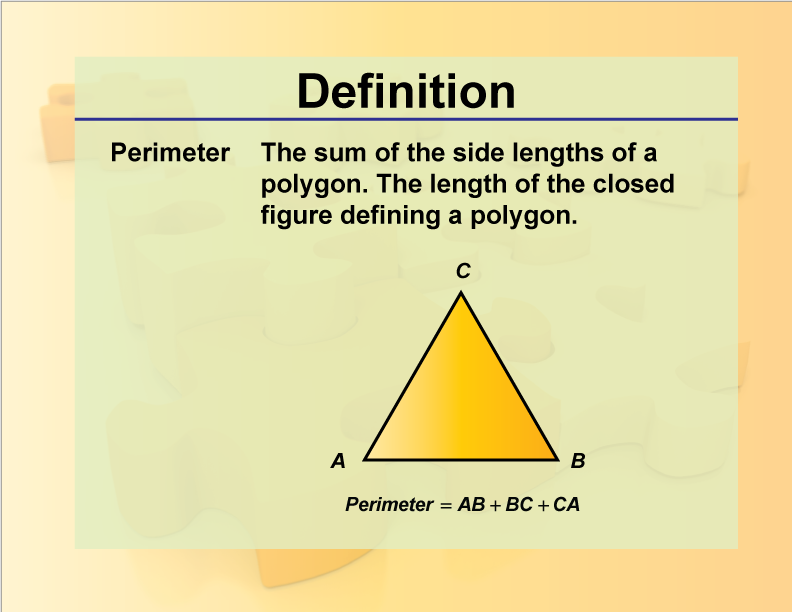
READ MORE:
Introduction
Welcome to our comprehensive guide on the definition of perimeter in geometry. In this section, we will provide a detailed introduction to the concept of perimeter, its significance in geometry, and how it relates to various geometric shapes and figures.
To begin, let's establish a clear understanding of what perimeter entails. In geometry, perimeter refers to the total length of the boundary or outline of a two-dimensional shape. It is essentially the sum of all the sides of the shape.
Understanding perimeter is crucial in geometry as it serves as a fundamental measure for determining the size and extent of shapes. Whether you're studying basic shapes like rectangles and triangles or more complex figures, a solid grasp of perimeter is essential.
Throughout this guide, we will delve into the definition of perimeter in greater detail, explore different formulas for calculating perimeter, and discuss its practical applications in real-world scenarios. By the end, you'll have a comprehensive understanding of perimeter and its importance in the realm of geometry.
Understanding Perimeter
Perimeter in geometry is a fundamental concept that involves the measurement of the boundary of a two-dimensional shape. Let's delve deeper into understanding what perimeter entails:
- Definition: Perimeter is the total length of the boundary of a shape, often represented in linear units such as centimeters, meters, or inches.
- Components: The perimeter of a shape is composed of the lengths of all its sides. For polygons, this includes straight line segments, while for circles, it involves the circumference.
- Measurement: To measure the perimeter of a shape, simply add up the lengths of its sides. For regular polygons, where all sides are equal, you can multiply the length of one side by the number of sides.
- Significance: Understanding perimeter is crucial in various fields such as architecture, construction, and engineering. It helps in determining the amount of material needed to enclose a space or the distance around a plot of land.
By grasping the concept of perimeter and its significance, you'll be equipped to solve geometric problems efficiently and apply them in real-world scenarios.
Importance of Perimeter in Geometry
The perimeter of a geometric shape is a fundamental concept in geometry. It represents the total length of the boundary of a shape and is crucial for various reasons, including understanding the properties of shapes, solving mathematical problems, and applying geometry in real-life scenarios.
Key Reasons Why Perimeter is Important
- Foundation of Geometry: Perimeter is one of the basic concepts that lay the foundation for understanding more complex geometric properties and relationships.
- Measurement of Length: Perimeter provides a way to measure the total length around a shape, which is essential for tasks such as fencing a property, framing a picture, or designing a garden.
- Calculation Basis: Understanding perimeter is essential for calculating other geometric properties, such as area and volume, especially in composite shapes.
- Application in Various Fields: The concept of perimeter is widely used in fields such as architecture, engineering, and construction, where precise measurements are critical.
Real-Life Applications of Perimeter
Perimeter has numerous practical applications in everyday life:
- Landscaping and Gardening: Determining the perimeter of a garden bed or lawn area helps in planning the amount of materials needed, such as fencing or edging.
- Construction and Architecture: Accurate perimeter measurements are vital for building structures, ensuring they fit within designated land areas, and complying with zoning laws.
- Sports Fields: The perimeter of sports fields, tracks, and courts must be precisely measured to meet regulatory standards.
- Interior Design: When decorating a room, knowing the perimeter helps in estimating the length of materials like baseboards, crown molding, and wallpaper borders.
Educational Importance
In education, the concept of perimeter is used to teach students about measurement, spatial understanding, and problem-solving skills. It is often one of the first geometric concepts introduced in mathematics curricula, serving as a stepping stone to more advanced topics.
- Enhancing Spatial Awareness: Learning about perimeter helps students develop a sense of space and dimension, which is essential for understanding the physical world.
- Problem-Solving Skills: Calculating perimeter involves critical thinking and problem-solving, as students learn to apply formulas and reasoning to find solutions.
Perimeter Formulas and Equations
The perimeter of a geometric shape is the total length of its boundary. Different shapes have different formulas for calculating their perimeters. Below, we provide the perimeter formulas for various common shapes.
Basic Shapes
- Square: The perimeter of a square is given by the formula: \[ P = 4a \] where \( a \) is the length of one side of the square.
- Rectangle: The perimeter of a rectangle is calculated as: \[ P = 2(l + w) \] where \( l \) is the length and \( w \) is the width.
- Triangle: The perimeter of a triangle is the sum of the lengths of its sides: \[ P = a + b + c \] where \( a \), \( b \), and \( c \) are the lengths of the sides.
- Circle (Circumference): The perimeter of a circle is known as the circumference and is calculated as: \[ C = 2\pi r = \pi d \] where \( r \) is the radius and \( d \) is the diameter.
Other Polygons
- Regular Polygon: For a regular polygon (a polygon with all sides and angles equal), the perimeter is: \[ P = n \times a \] where \( n \) is the number of sides and \( a \) is the length of one side.
- Parallelogram: The perimeter of a parallelogram is given by: \[ P = 2(a + b) \] where \( a \) and \( b \) are the lengths of the adjacent sides.
- Rhombus: The perimeter of a rhombus is: \[ P = 4a \] where \( a \) is the length of a side.
- Trapezoid: The perimeter of a trapezoid is the sum of the lengths of all its sides: \[ P = a + b + c + d \] where \( a \), \( b \), \( c \), and \( d \) are the lengths of the sides.
- Kite: The perimeter of a kite is: \[ P = 2(a + b) \] where \( a \) and \( b \) are the lengths of the pairs of adjacent sides.
Examples
- Example 1: For a square with side length 5 cm, the perimeter is: \[ P = 4 \times 5 = 20 \text{ cm} \]
- Example 2: For a rectangle with length 7 m and width 4 m, the perimeter is: \[ P = 2(7 + 4) = 2 \times 11 = 22 \text{ m} \]
- Example 3: For a triangle with sides 3 cm, 4 cm, and 5 cm, the perimeter is: \[ P = 3 + 4 + 5 = 12 \text{ cm} \]
- Example 4: For a circle with a radius of 10 cm, the circumference is: \[ C = 2\pi \times 10 = 20\pi \approx 62.83 \text{ cm} \]
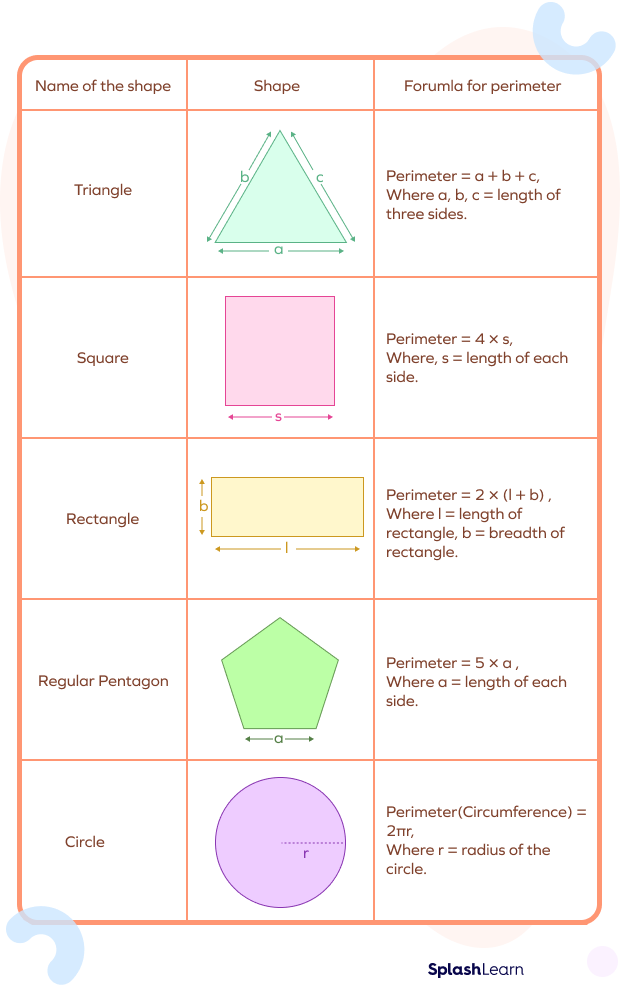
Calculating Perimeter for Basic Shapes
Calculating the perimeter of basic shapes involves summing up the lengths of all the sides of the shape. Below are detailed steps and formulas for calculating the perimeter of various basic shapes.
Square
The perimeter of a square is calculated by adding the lengths of all four equal sides. The formula is:
\[
P = 4a
\]
where \( a \) is the length of one side of the square.
Example: For a square with a side length of 5 cm, the perimeter is:
\[
P = 4 \times 5 = 20 \text{ cm}
\]
Rectangle
The perimeter of a rectangle is the sum of all its sides, with opposite sides being equal. The formula is:
\[
P = 2(l + w)
\]
where \( l \) is the length and \( w \) is the width.
Example: For a rectangle with a length of 7 m and a width of 4 m, the perimeter is:
\[
P = 2(7 + 4) = 2 \times 11 = 22 \text{ m}
\]
Triangle
The perimeter of a triangle is the sum of the lengths of its three sides. The general formula is:
\[
P = a + b + c
\]
where \( a \), \( b \), and \( c \) are the lengths of the sides.
Example: For a triangle with sides 3 cm, 4 cm, and 5 cm, the perimeter is:
\[
P = 3 + 4 + 5 = 12 \text{ cm}
\]
Circle (Circumference)
The perimeter of a circle is called the circumference. The formula is:
\[
C = 2\pi r = \pi d
\]
where \( r \) is the radius and \( d \) is the diameter.
Example: For a circle with a radius of 10 cm, the circumference is:
\[
C = 2\pi \times 10 = 20\pi \approx 62.83 \text{ cm}
\]
Regular Polygon
For a regular polygon (a polygon with all sides and angles equal), the perimeter is:
\[
P = n \times a
\]
where \( n \) is the number of sides and \( a \) is the length of one side.
Example: For a regular pentagon with each side of 4 cm, the perimeter is:
\[
P = 5 \times 4 = 20 \text{ cm}
\]
Irregular Polygon
The perimeter of an irregular polygon is the sum of the lengths of all its sides. The general formula is:
\[
P = a_1 + a_2 + a_3 + \ldots + a_n
\]
where \( a_1, a_2, a_3, \ldots, a_n \) are the lengths of the sides.
Example: For an irregular polygon with sides of 3 cm, 4 cm, 5 cm, 6 cm, and 7 cm, the perimeter is:
\[
P = 3 + 4 + 5 + 6 + 7 = 25 \text{ cm}
\]
Understanding these basic formulas and examples helps in calculating the perimeter of various shapes accurately and efficiently.
Advanced Perimeter Problems
Advanced perimeter problems often involve complex shapes and require a deeper understanding of geometric principles. These problems can include irregular shapes, composite figures, and scenarios involving algebraic expressions or coordinate geometry. Below are some examples and methods for solving advanced perimeter problems.
Irregular Polygons
Irregular polygons have sides of different lengths, making the calculation of the perimeter a bit more challenging. The general formula is the sum of all side lengths:
\[
P = a_1 + a_2 + a_3 + \ldots + a_n
\]
where \( a_1, a_2, a_3, \ldots, a_n \) are the lengths of the sides.
Example: For an irregular hexagon with side lengths 3 cm, 4 cm, 5 cm, 6 cm, 7 cm, and 8 cm, the perimeter is:
\[
P = 3 + 4 + 5 + 6 + 7 + 8 = 33 \text{ cm}
\]
Composite Figures
Composite figures are made up of more than one basic shape. To find the perimeter, break the figure into its basic shapes and sum their perimeters, being careful not to double-count shared sides.
Example: Consider a figure made of a rectangle and a semicircle. The rectangle has a length of 10 cm and a width of 4 cm, and the semicircle is attached to one of the width sides with a diameter of 4 cm.
The perimeter of the rectangle (excluding the side where the semicircle is attached) is:
\[
P_{rectangle} = 2(l + w) - w = 2(10 + 4) - 4 = 20 cm
\]
The perimeter of the semicircle is half the circumference of a full circle plus the diameter:
\[
P_{semicircle} = \pi r + d = \pi \times 2 + 4 = 2\pi + 4
\]
Therefore, the total perimeter of the composite figure is:
\[
P_{total} = P_{rectangle} + P_{semicircle} = 20 + 2\pi + 4 \approx 20 + 6.28 + 4 = 30.28 \text{ cm}
\]
Coordinate Geometry
In coordinate geometry, the perimeter of a polygon can be found by calculating the distance between each pair of adjacent vertices. The distance formula is used for this purpose:
\[
d = \sqrt{(x_2 - x_1)^2 + (y_2 - y_1)^2}
\]
Example: Find the perimeter of a triangle with vertices at \((1, 1)\), \((4, 5)\), and \((1, 5)\).
First, calculate the distances between each pair of vertices:
\[
d_1 = \sqrt{(4 - 1)^2 + (5 - 1)^2} = \sqrt{3^2 + 4^2} = \sqrt{9 + 16} = 5
\]
\[
d_2 = \sqrt{(4 - 1)^2 + (5 - 5)^2} = \sqrt{3^2 + 0} = 3
\]
\[
d_3 = \sqrt{(1 - 1)^2 + (5 - 1)^2} = \sqrt{0 + 4^2} = 4
\]
The perimeter of the triangle is:
\[
P = d_1 + d_2 + d_3 = 5 + 3 + 4 = 12 \text{ units}
\]
Algebraic Perimeters
Sometimes, perimeter problems involve algebraic expressions. For example, finding the perimeter of a rectangle with variable side lengths given by expressions.
Example: A rectangle has side lengths \(2x + 3\) and \(x - 1\). Find the perimeter.
Use the formula for the perimeter of a rectangle:
\[
P = 2(l + w) = 2((2x + 3) + (x - 1)) = 2(2x + 3 + x - 1) = 2(3x + 2) = 6x + 4
\]
Thus, the perimeter is \(6x + 4\) units.
These examples illustrate the various methods and strategies for solving advanced perimeter problems. By breaking down the problem into manageable parts and applying the appropriate formulas, complex perimeter calculations become more straightforward.
Applications of Perimeter in Real Life
Perimeter has a wide range of practical applications in everyday life, from construction to crafts. Understanding and calculating perimeter is essential for various activities and professions. Here are some key applications:
Construction and Architecture
- Fencing and Boundary Setting: Calculating the perimeter is crucial when installing fences around properties, gardens, or parks. It helps in determining the total length of fencing material required.
- Building Layouts: Architects and builders use perimeter calculations to outline the dimensions of buildings, ensuring that all sides are properly measured and fit within designated plots.
Landscaping and Gardening
- Garden Beds: Knowing the perimeter of a garden bed helps in planning the amount of edging material needed to outline the bed.
- Pathways and Walkways: Perimeter calculations are used to determine the length of materials like bricks or stones required for constructing garden paths.
Interior Design and Home Improvement
- Room Layouts: Measuring the perimeter of a room is essential when installing baseboards, crown molding, or wallpaper borders.
- Flooring: Calculating the perimeter helps in determining the amount of material needed for carpeting or tiling a floor.
Recreation and Sports
- Sports Fields: The perimeter of sports fields, such as soccer fields, tennis courts, and running tracks, must be measured to meet regulatory standards.
- Playgrounds: Designing playgrounds requires accurate perimeter measurements to ensure safety and proper use of space.
Crafts and DIY Projects
- Decorative Edging: When creating crafts like quilts or scrapbook pages, knowing the perimeter helps in determining the length of ribbons or lace needed for edges.
- Furniture Making: Perimeter measurements are crucial in designing and building furniture to ensure all parts fit together perfectly.
Fashion and Textiles
- Clothing Design: Designers calculate the perimeter of fabric pieces to ensure proper fit and to minimize waste.
- Accessory Creation: Creating items like belts, bags, or hats often requires precise perimeter measurements to ensure functionality and aesthetics.
These examples illustrate the importance of understanding and accurately calculating perimeter in a variety of real-world scenarios. Whether for practical purposes or creative projects, perimeter is a fundamental concept that aids in precise planning and execution.
Chu vi là gì? - Hình học cho trẻ em

